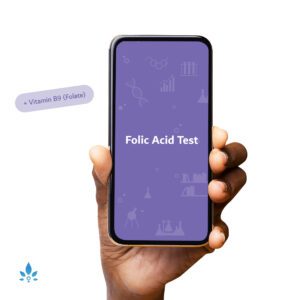My Newborn has Been Diagnosed with a Deficiency in G6PD: What Does This Mean?


Glucose 6-phosphate dehydrogenase (G6PD) deficiency is one of the most common enzyme deficiencies worldwide, affecting up to 400 million people globally. So, what is it; who is at most risk; what are the symptoms and how will it affect your baby as he grows?
What causes a deficiency in G6PD?
There are thought to be over 400 mutations that can result in a deficiency of G6PD. Different gene mutations cause differing levels of enzyme deficiency, however, as a total deficiency would be incompatible with life, everyone retains at least some enzymatic activity. The World Health Organisation (WHO) has grouped the different gene variants into classes depending on the severity of the mutation:
- Class I – severe. Chronic haemolysis in the absence of any trigger.
- Class II – severe. Enzyme activity <10%. Intermittent haemolysis.
- Class III – moderate. Enzyme activity 10-60%. Haemolysis occurs following exposure to stressor.
- Class IV – mild to no enzyme deficiency. Enzyme activity 60-150%.
- Class V – no deficiency. Enzyme activity >150%.
Class IV and V are very rare; class I is uncommon, and less likely to be population-specific. Class II and III alter in prevalence depending on where in the world you live. Those who live in Africa, Asia, certain parts of the Mediterranean and the Middle East are much more likely to have a deficiency in G6PD. In some high risk populations, between 5 and 30% of people are affected. The reasons for the regional differences are not fully understood, however, prevalence does correlate strongly with the geographical distribution of malaria. It is even thought that those who carry the defect are at reduced risk of malaria infection.
G6PD mutations are x-linked, which means that males are more likely to display phenotypic symptoms of the condition. This is because men only have one X chromosome; females have two X chromosomes, so will often have a more mild form, or be a carrier of the condition. It is very rare for females to carry a mutation on both of their X chromosomes and this would normally co-exist with an additional immune condition.
What puts my child at increased risk?
As well as geographical variation and gender, children with a family history of anaemia, jaundice, splenomegaly or cholelithiasis should be considered at greater risk of having a G6PD deficiency. Having a pronounced haemolytic reaction to a known stressor will probably also prompt a doctor into considering this diagnosis.
What does a deficiency mean?
The enzyme G6PD, found in all of the body’s cells, is involved in the production of another enzyme, NADPH, which has a protective role throughout the body. It protects the cells of the body from oxidative damage. A reduction in G6PD activity means that less NADPH is produced, which means that the cells that this enzyme would normally protect are more susceptible to damage. The body is able to compensate for G6PD deficiency in most cells, however, the red blood cells are particularly vulnerable to damage and destruction.
Red blood cells transport oxygen from the lungs to the tissues of the body. If the red blood cells are destroyed faster than the body can replace them, haemoglobin is released into the blood. The medical name for this condition is haemolysis.
Many people with a deficiency in G6PD remain asymptomatic. In fact, in certain parts of the world people may be unaware that they have a deficiency. The gene mutation in isolation is insufficient to cause haemolysis and an acute episode will only occur with exposure to a particular trigger, or stressor. In parts of the world where G6PD deficiency is less common, such as the USA and the UK, testing for mutations in this gene does not form a part of the routine newborn screening test. However, the WHO has recommended it is incorporated into the standard screening assessment for babies who are born into populations where the prevalence is 3-5%. The Middle East and Africa fall into this category.
How is G6PD deficiency treated?
There is no cure for a deficiency in G6PD, but awareness is important, so that the stressors which can induce a haemolytic event can be avoided. There are three main stressors that can have a detrimental effect on people with a deficiency in G6PD:
- Infection. This is the most common cause of acute haemolysis. The infections that are most likely to trigger acute haemolysis include salmonella, Escherichia coli, streptococci, viral hepatitis, and influenza A. The mechanism is unclear, but thought to be due, in part, to the infectious agents, causing a build-up of leukocytes, which trigger oxidative stress.
- Oxidative drugs. There is a wide spectrum of drugs that can trigger haemolysis in those with G6PD deficiency; these include, antimalarials, analgesics, antipyretics and antibacterials. There is some confusion however, as to whether, in some cases, the haemolysis is triggered by the drug, or by the underlying infection for which the drug is prescribed. Following ingestion of a stressor drug, haemolysis typically occurs after 24-72 hours. It will usually resolve itself within 4 – 7 days. An important factor to bear in mind if your child has been diagnosed with G6PD deficiency is that oxidative drugs can be transmitted through the breast milk, potentially triggering acute haemolysis in vulnerable infants. As such, it is worth discussing the risk with your doctor, prior to taking any medications.
- Fava beans. Favism is a reaction to fava beans, initially thought to be an allergic reaction, but now known to be another stressor in cases of G6PD deficiency. There are two chemicals found in these beans, vicine and convicine, which are known to cause oxidative stress. Not all people with G6PD deficiency will react to fava beans, however, young children are particularly vulnerable. The effects are also usually more severe in children. Initial symptoms may include an increased temperature, irritability and lethargy; progressing to nausea, abdominal discomfort, darker urine, pale skin and jaundice. In very severe cases the child may become tachycardic.
A splenectomy will rarely be recommended for G6PD deficiency. Folic acid and iron supplements may help during haemolytic events. Fortunately most cases of acute haemolysis are self-limiting and short-lived.
In rare cases a blood transfusion may be required, however, this will usually only be necessary in those with chronic haemolysis. In the chronic condition, no stressor is required and haemolysis occurs during normal red blood cell metabolism. It is important to avoid complications in cases of chronic haemolysis as the condition can lead to hypovolemic shock and acute renal failure.
People who have a deficiency in G6PD are predisposed to the development of sepsis, so symptoms should be monitored and, as far as possible, stressors should be avoided.
Neonatal Hyperbilirubinaemia
Male babies with a mutation in the G6PD gene are twice as likely to experience neonatal hyperbilirubinaemia. This occurs when there is an excess of bilirubin in the blood. It is unclear why the bilirubin accumulates, but likely to be caused, at least in part, by impaired clearance by the liver. babies who are affected may require phototherapy or, in severe cases, transfusion.
Excess bilirubin in the blood can cause jaundice, which is one of the most common conditions requiring medical attention in newborns. It causes a yellowing of the skin and is treatable but requires rapid medical attention because in rare cases it can cause neurological issues. This happens when there is a toxic build-up of bilirubin in the brain. Warning signs to be aware of include a lack of energy, poor feeding, vomiting and fever.
Conclusion
The main thing to remember if your newborn is diagnosed with a deficiency in G6PD is that the majority of people remain clinically asymptomatic throughout life. Severe deficiencies are rare and even moderate deficiencies will only cause a physiological response with additional stressor exposure. Awareness is key, as knowing that there are specific stressors means that these can be avoided, reducing the likelihood of haemolytic episodes.
Nabta is reshaping women’s healthcare. We support women with their personal health journeys, from everyday wellbeing to the uniquely female experiences of fertility, pregnancy, and menopause.
Get in touch if you have any questions about this article or any aspect of women’s health. We’re here for you.
Sources:
- Frank, J E. “Diagnosis and Management of G6PD Deficiency.” American Family Physician, vol. 72, no. 7, 1 Oct. 2005, pp. 1277–1282.
- “Glucose-6-Phosphate Dehydrogenase Deficiency.” NORD (National Organization for Rare Disorders), https://rarediseases.org/rare-diseases/glucose-6-phosphate-dehydrogenase-deficiency/.
- “Glucose-6-Phosphate Dehydrogenase Deficiency – Genetics Home Reference – NIH.” U.S. National Library of Medicine, National Institutes of Health, https://ghr.nlm.nih.gov/condition/glucose-6-phosphate-dehydrogenase-deficiency.
- Luzzatto, Lucio, and Elisa Seneca. “G6PD Deficiency: a Classic Example of Pharmacogenetics with on-Going Clinical Implications.” British Journal of Haematology, vol. 164, no. 4, 16 Apr. 2014, pp. 469–480., doi:10.1111/bjh.12665.
- Therrell, Bradford L., and Carmencita D. Padilla. “Newborn Screening in the Developing Countries.” Current Opinion in Pediatrics, vol. 30, no. 6, Dec. 2018, pp. 734–739., doi:10.1097/mop.0000000000000683.












































